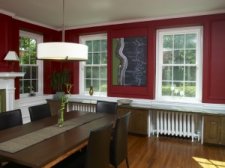What Do U Value? A Glass Efficiency Primer
Seaway Manufacturing of Erie, PA,
As if shopping for replacement windows wasn’t confusing enough, now you’ve seen the term “U-Value” for the first time. What does it mean? Is it like the R-Value rating you’ve seen on those bundles of pink insulation? Yes. And no.
In case you’re getting ready to take the SAT, here’s the official definition: A U-Value – also called a U-Factor – is the overall heat transfer coefficient that describes how well a building element conducts heat or the rate of transfer of heat (in watts) through one square meter of a structure divided by the difference in temperature across the structure.
Glad we cleared that up. Now, in English, the U-Value of a window or other building component is a measure of heat loss. R-Value is a measure of resistance (the “R” in R-Value) to heat loss. Here’s why that’s important: with an R-Value a high number is better. This is easy to see in the insulation aisle at your local home center; the higher the R-Value, the thicker the insulation and vice versa.
But because U-Values measure thermal loss, a lower number means a more efficient window glass package, and that number will appear in manufacturers’ literature as well as the NFRC label affixed to every new window. All other things being equal, a window with a lower U-Value will insulate better.
Bear in mind, however, that all other things are not necessarily equal. While glass makes up the largest area of a window, the construction of the window also has a big impact on how well it will resist the elements. The most efficient glass, if installed in a poorly-constructed window, will not be very effective. Be sure to evaluate the entire window and not just the glass.
One more note on the numbers: on that same NFRC label you’ll see a rating for Solar Heat Gain Coefficient (SHGC). This is similar to the U-Value except that it measures only how well the product blocks heat caused by the sun. The number will be between 0 and 1, and again, lower is better unless you’re in a region where heating days outnumber cooling days quite substantially.
One final note: the right answer for your home will depend in part on where it’s located. The EPA’s Energy Star program has divided the country into climate zones based on the number of heating and cooling days for each. A window or door that’s appropriate for the Northern Zone might not be right for the South-Central or Southern Zones. Here’s a link to a map showing the Energy Star climate zones, or use this tool to enter your state and county.
Questions about replacement windows? Contact Seaway Manufacturing, or click here to find a Seaway dealer in your area



